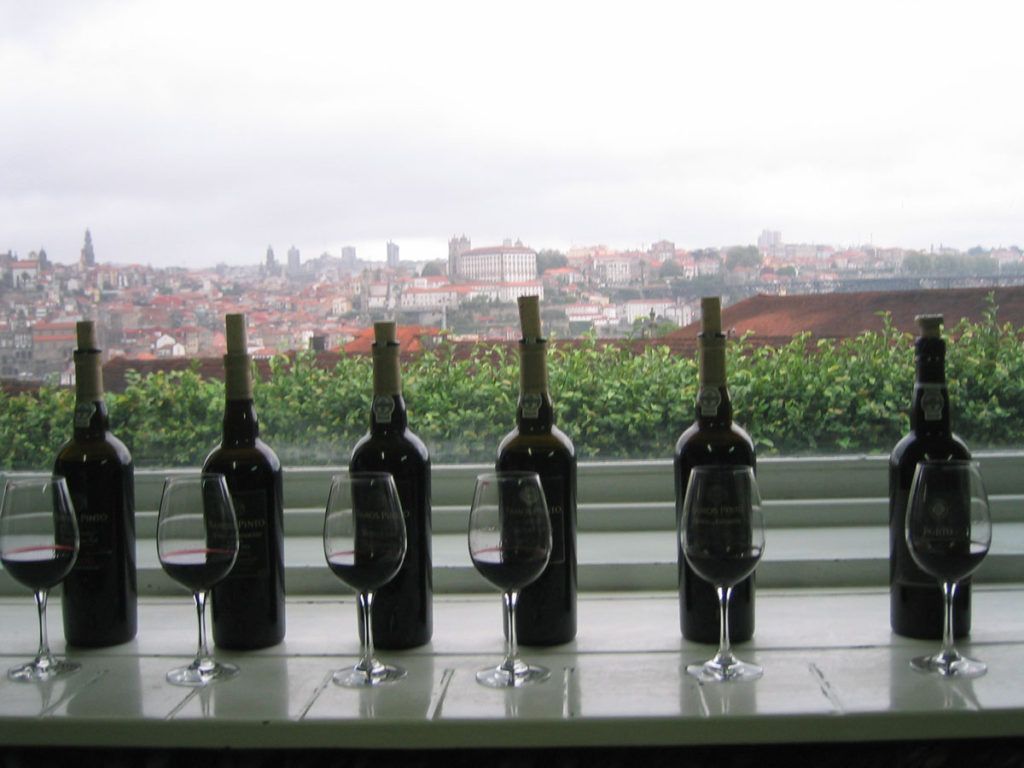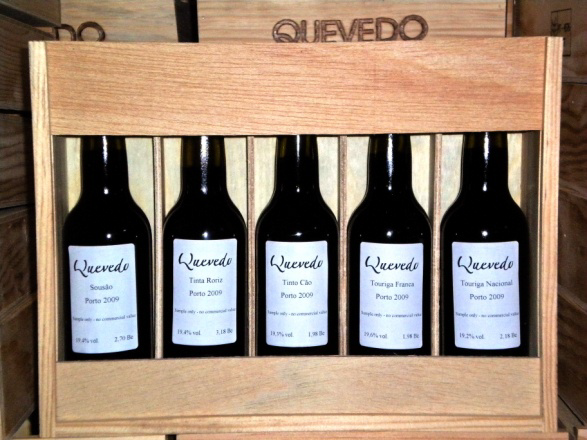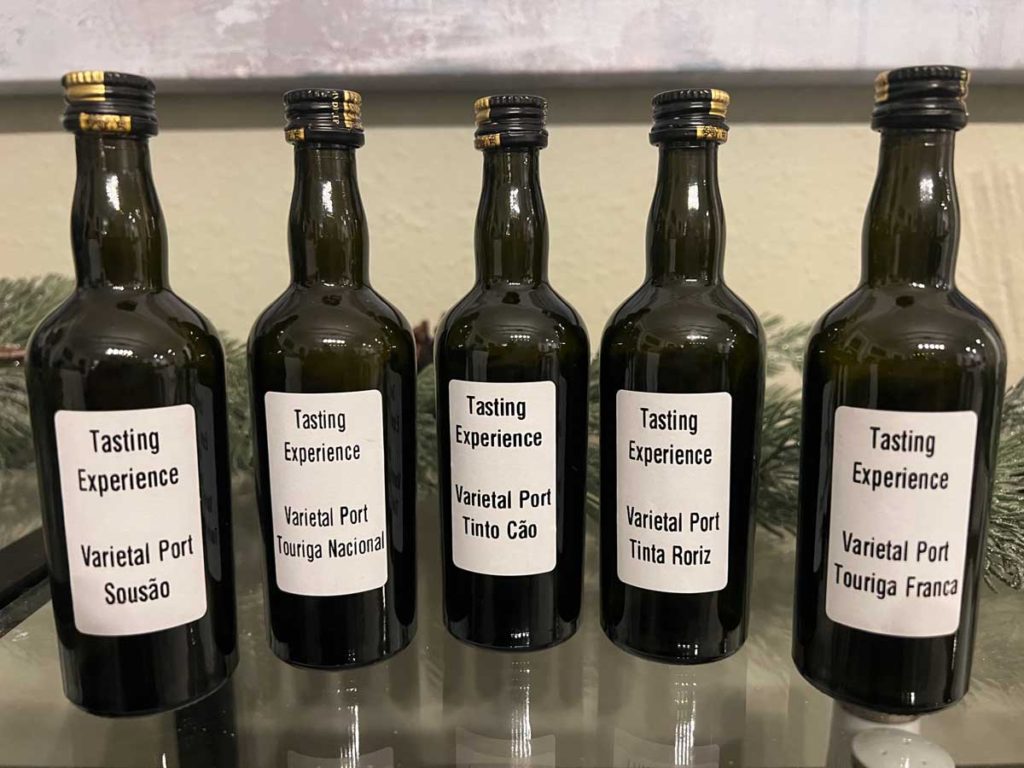By regulation, commercial Ports are always a blend of multiple grape varietals, so it is unusual to try a fortified Port made from a single grape varietal. Under the IVDP regulations, this type of fortified single varietal Port is technically a cask sample and cannot be legally bottled for commercial release. I’ve tried these types of cask samples/experiments on several occasions, and each has helped educate and inform my Port knowledge more than I could have ever imagined.
My first tasting of single varietal Ports was at Ramos Pinto’s Lodge in Vila Nova de Gaia, Portugal during my first Port Harvest Tour in 2006. Our host, the legendary João Nicolau de Almeida, served us Ramos Pinto Single Varietal Ports from 1983, including Touriga Nacional, Tinta Barroca, Touriga Francesa, and Tinta Roriz. In addition, he served us a bottle of the final 1983 Vintage Port, which was the commercial blend of these grape varietals.
To say that the tasting was revelatory is a bit of an understatement. For the first time, I better understood what each grape varietal brought to the finished Port blend. That understanding exponentially changed my understanding of Port and how I analyze and enjoy it.

Fast forward to 2010, when Roy Hersh, in his For The Love Of Port Newsletter, announced a buying opportunity he had negotiated with the Port producer Quevedo exclusively for Roy’s Newsletter Subscribers. The offer included several of Quevedo’s outstanding Ports, and as a thank you for purchasing at least twelve bottles, Quevedo threw in a varietal Port tasting pack.

The tasting pack contained five miniature bottles of single variety Ports, including Touriga Franca, Tinta Roriz, Touriga Nacional, Sousão, and Tinto Cão. These single varietal Ports were made from the 2009 harvest, and the grapes came from Quevedo’s Quinta da Trovisca, a block-planted, nine-year-old vineyard.
At the time, Oscar shared the following in the FTLOP Newsletter:
“We all know that Port Wine traditionally results from a blend of many different varietals grown in the Douro Valley. But instead of blending, it would be interesting to know how each one of these varietals contributes to the blend. So why not ferment the grapes separately that we have in Quinta da Trovisca – a block planted vineyard – and see what is the flavor and taste of each varietal?”
The sample boxes of these single varietal Ports were a hit and provided me with another opportunity to focus on individual grape characteristics that make up Port blends.
Oscar and I developed a friendship, kept in touch, and tried to get together whenever I was visiting Portugal. We share a passion for geeky knowledge of and experiments with Port, and we frequently talked about the 2009 varietal box and the experience that it afforded those seeking to better understand Port.
Ever the innovator, Oscar later partnered with UK wine merchants to set up a Taste at Home experience, where Port lovers in the UK could order packs of themed Ports from local wine merchants like Vintage Wine and Port, and then join Oscar on a Zoom event where he talked about and tasted the wines with the virtual participants.

I, and a lot of my US Port wine friends, were rather jealous of our UK compatriots, as these special collections of Ports for the virtual tastings were not available in the US, and the UK merchants would not ship them to us here.
I eventually reached out to Oscar and asked about hosting a US version of his Taste at Home events, and he was very excited to partner with me to do so. I mentioned that I’d love to do something educational like he had done with the single varietal Port packs in 2010, and Oscar said that he would check their stocks, talk to his sister Claudia (who is also Quevedo’s Winemaker), and get back to me with some proposed themes. He discovered that Claudia had taken the leftover single varietal Ports from the 2010 FTLOP buying opportunity, put them into glass demijohns, and stored them in their cellar. Oscar said they would be happy to bottle up the single varietals again for this virtual tasting!
We picked a date for the virtual tasting, and I worked closely with Quevedo to create marketing materials, and communications for the event, and happened to be in Portugal a few months prior to the event so Oscar and I recorded a video to promote the event (and a second Old White Port Virtual Tasting we also organized).
Participants began ordering their tasting packs from Quevedo’s website, and they were shipped to participants in the US before the virtual tasting.
On the day of the tasting, we all logged into Zoom and did an hour-long tasting through the five single-varietal Ports with Oscar.



As mentioned earlier, commercially available Port wines are always a blend of multiple grape varieties. Blending Ports is a meticulous process that involves combining different grape varieties to achieve a harmonious and well-balanced final product, sometimes tuned to match the house style of the producer or to accentuate the unique characteristics of the terroir. Each of the grape varieties brings unique characteristics to the blend:
Touriga Nacional:
• Characteristics: Intense aromatics, floral notes (violet and lavender), dark fruit flavors, robust tannins, and good aging potential.
• Role in Blending: Adds structure, complexity, and aromatic depth. Often considered the backbone of the blend, providing tannic structure for aging.
Tinta Roriz (Tempranillo):
• Characteristics: Complex aromas, red fruit notes, subtle spiciness, moderate to high tannins, and good acidity.
• Role in Blending: Contributes depth, a hint of spiciness, and smooth tannins. Enhances the overall complexity of the blend.
Touriga Franca:
• Characteristics: Finesse, elegance, floral and red fruit aromas, moderate tannins, and good acidity.
• Role in Blending: Adds finesse and softens the blend, providing balance to the more robust varieties. Contributes to the aromatic complexity.
Tinta Cão:
• Characteristics: Distinctive aromatics, complex black fruit notes, moderate tannins, and good acidity.
• Role in Blending: Contributes to the overall complexity, often providing a unique aromatic profile. Adds finesse and structure to the blend.
Sousão:
• Characteristics: Intensely colored, vibrant aromas, high acidity, robust tannins, and dark fruit notes.
• Role in Blending: Adds color, acidity, and tannic structure. Enhances the overall freshness and complexity of the blend.

Tasting Notes
2009 Quevedo Touriga Nacional Port – Single varietal Port cask sample. Tasted as part of a virtual tasting with Oscar Quevedo. 187ml bottle. Touriga Nacional is known as a flagship grape for Ports, and it brings great aromatics, as well as structure and tannins for aging. This wine has a luscious nose of blackberry and black plum. The entry also shows rich black fruit, and the tannins are pronounced, but not out of balance. There is good acidity, and the body weight hovers somewhere between medium and full. This is very pleasant to drink and exhibits several dimensional characteristics that make it easy to see how important a role it plays in the Port blends. 90 points.
2009 Quevedo Tinta Roriz Port – Single varietal Port cask sample. Tasted as part of a virtual tasting with Oscar Quevedo. 187ml bottle. Tinta Roriz can have high tannins but also helps bring complexity to Port blends. This wine is light ruby-amber in color, lacking some of the intense richness of the other single varietal Ports in this tasting. There are lovely smoky, complex red fruit and chocolate notes on the nose. It has a rich mouthfeel and nice red fruit and dried spices on the palate. The tannins are large and likely would benefit from more time to settle down. It has a long finish with Cherry and fresh crushed raspberry. 88 points.
2009 Quevedo Touriga Franca Port – Single varietal Port cask sample. Tasted as part of a virtual tasting with Oscar Quevedo. 187ml bottle. Touriga France is best known for the elegance and structure it brings to Port. This wine is a beautiful ruby color. There are nice aromas of blueberry and floral notes on the nose. On the palate there is good structure and balance, giving the wine a very elegant mouthfeel. Tannins, acidity, and red fruits are noticeable on the mid-palate and long finish. While this wine has some very nice components, it doesn’t wow me, but I can see how it could contribute its better component to a final Port blend. 86 points.
2009 Quevedo Tinta Cão Port – Single varietal Port cask sample. Tasted as part of a virtual tasting with Oscar Quevedo. 187ml bottle. Tinta Cão is a low-yield grape with low alcohol and less structure. It brings fragrance and fruit to the wine. This one has a beautiful nose of violets and light strawberry on the nose. The entry has pleasant fruit and firm tannins on the mid-palate. Decent acidity but a little bitterness on the finish. As a single varietal, it is ok, but I see why this makes a better blending grape for Ports. 85 points.
2009 Quevedo Sousão Port – Single varietal Port cask sample. Tasted as part of a virtual tasting with Oscar Quevedo. 187ml bottle. Sousão provides deep color and acidity. This wine is a deep, vibrant purple-ruby in color. It has lovely fragrances of crushed blueberry and blue fruits. The entry is surprisingly rich and intense but with a smooth profile. On the mid-palate, the boysenberry and sweet cranberry appear, along with noticeable, but round, tannins, and good acidity. 89 points.
This was such a unique opportunity to not only taste these rare, single varietal Ports, but it was also amazing to be able to do so virtually with Oscar. It was an amazing opportunity to further understand Port, and what each of the grape varietals contribute to the final product.






